#Retail Analytics
Explore tagged Tumblr posts
Text
Discover the power of smart decisions in retail! 🛍️ By tapping into machine learning insights, businesses can make better choices for sales and inventory. It's all about meeting customer needs and staying ahead of the curve.
#machine learning#ml#retail#retail analytics#retailtech#sales#inventory#management#data analytics#datascience#getondata
3 notes
·
View notes
Text
The Data-Driven Retailer: Essential KPIs Every Retail Manager Should Track
In today’s competitive retail landscape, relying on guesswork is no longer an option. Successful retailers use data analytics in the retail industry to make informed decisions, improve operations, and boost customer satisfaction. Whether managing a small store or a multi-location chain, retail managers must track the right KPIs (Key Performance Indicators) to stay ahead.

This article explores the most important KPIs every data-driven retailer should monitor—and how retail data analytics solutions can help turn raw numbers into actionable insights.
Why KPIs Matter in Retail
KPIs are measurable values that indicate how well a retail business is performing. They provide clarity on what’s working, what’s not, and where improvements are needed. From sales trends to inventory efficiency, these metrics can guide every decision—from staffing to store layout to marketing.
With the rise of retail analytics data, retail managers now have access to real-time dashboards and detailed reports that go beyond basic sales numbers. Tracking these KPIs consistently can lead to better planning, improved customer experiences, and higher profits.
Top Retail KPIs Every Manager Should Track
Sales Per Square Foot This metric shows how effectively a store is using its space. It's calculated by dividing total sales by the total selling area in square feet.
Why it matters: It helps managers assess the productivity of floor space and identify which areas or product categories need attention or rearrangement.
Foot Traffic Foot traffic tracks how many people enter your store within a specific time period.
Why it matters: It reveals whether your marketing efforts are working and helps correlate visitor numbers with sales performance. When paired with conversion rate data, it becomes even more valuable.
Conversion Rate This is the percentage of visitors who make a purchase.
Formula: (Number of sales ÷ Number of visitors) × 100
Why it matters: A high conversion rate usually means your store is effectively engaging customers and meeting their needs. If traffic is high but conversions are low, it may signal an issue with pricing, staff, or layout.
Average Transaction Value (ATV) ATV shows the average amount spent per customer transaction.
Formula: Total revenue ÷ Number of transactions
Why it matters: This KPI helps evaluate upselling and cross-selling strategies. Increasing ATVs can lead to higher revenue without needing more customers.
Inventory Turnover This metric shows how quickly inventory is sold and replaced over a given period.
Formula: Cost of Goods Sold (COGS) ÷ Average inventory value
Why it matters: A healthy turnover rate prevents overstocking and reduces storage costs. Low turnover may indicate excess inventory or declining product demand.
Sell-Through Rate This tells you how much inventory was sold compared to what was received.
Formula: (Units sold ÷ Units received) × 100
Why it matters: It helps identify fast-moving vs. slow-moving products and allows better demand forecasting.
Customer Retention Rate This KPI measures how many customers return to make repeat purchases.
Why it matters: It’s usually more cost-effective to retain a customer than acquire a new one. A high retention rate often indicates strong service and brand loyalty.
Employee Productivity Measured by sales per employee or tasks completed per shift, this metric helps gauge staff performance.
Why it matters: Productivity insights can help optimize staffing, reduce costs, and improve customer service.
How Retail Data Analytics Solutions Help
While tracking KPIs is essential, manually collecting and analyzing this data can be time-consuming. That’s where retail data analytics solutions come in. These platforms automate the process by collecting retail analytics data from POS systems, customer apps, sensors, and more.
Benefits of using analytics solutions:
Real-time dashboards to monitor KPIs at a glance.
Predictive insights to forecast sales, inventory needs, or staffing gaps.
Custom reports to compare store performance across regions or teams.
Alerts to flag underperforming products, low stock, or missed targets.
By integrating data from multiple sources, analytics solutions give managers a 360° view of store performance, empowering better decision-making at every level.
The Role of Data Analytics in Retail Industry Growth
Retailers who invest in data analytics in the retail industry gain a competitive edge. They’re better equipped to spot trends early, respond to customer needs, and run leaner, more efficient operations. Data also supports personalization efforts, helping stores create tailored experiences that drive loyalty and increase revenue.
As the retail environment becomes more digital and connected, data-driven management is no longer optional—it’s essential.
Conclusion
Becoming a data-driven retailer starts with tracking the right KPIs. Metrics like sales per square foot, conversion rate, inventory turnover, and customer retention provide the insights needed to make smart, informed decisions.
With the help of retail data analytics solutions, managers can turn retail analytics data into strategies that improve both the customer experience and the bottom line. In today’s fast-paced retail world, understanding your numbers isn’t just smart—it’s the key to long-term success.
0 notes
Text
Forget Departmental Stores; Superstores are the Trend!
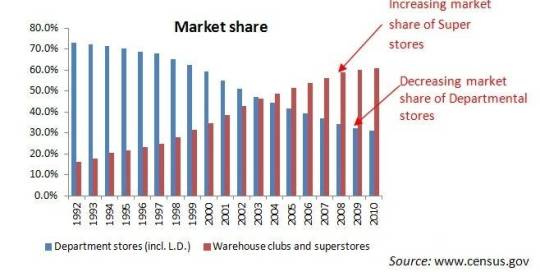
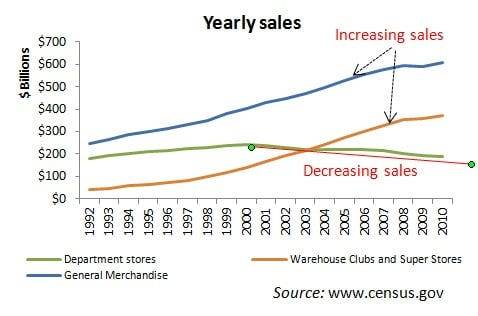
In addition to that from 1997 to 2007 numbers of warehouse club and super stores have increased by 178% while Departmental stores have decreased by 18%. The facts that numbers of Super stores are increasing and sales of Departmental stores are decreasing indicate that Warehouse clubs and Super stores are replacing Departmental stores.
Alcohol No Longer a Luxury!
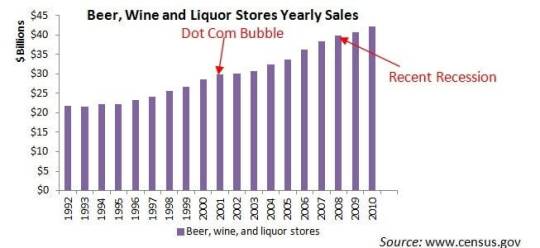
Sports Habits Die Hard

From the above graph, it is also evident that sales growth is never negative indicating that Sports goods stores sales have never declined majorly. In addition to that, during recession sports goods stores sales has grown more than GDP in 2008 and maintained the sales i.e., 0% growth till 2009 end. This implies that even during recession people tend to keep up with their sports habits even though they may not take new ones.
No to Exclusive stores; Welcome Family Stores
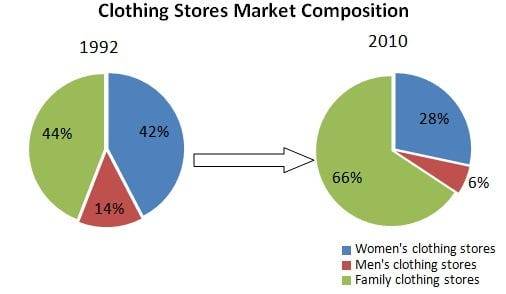
The market share composition of clothing industry show that Family clothing stores market share has increased (from 44% to 66%) while the market share of women’s and men’s clothing stores has decreased (from 42% to 28% and 14% to 6% respectively) — a change in preference. The Compound Annual Growth Rate (CAGR) of Men’s clothing stores, Women’s Clothing stores and Family Clothing stores are -1.5%, 0.83% and 5.42% respectively. The facts that increasing market share and high CAGR implies that people are shifting their preference from exclusive stores to Family clothing stores.
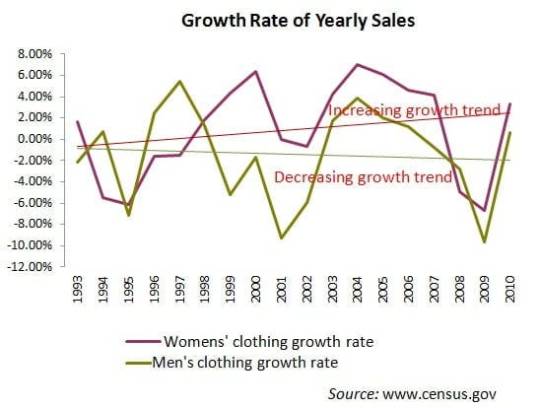
Men’s clothing stores are majorly affected by family stores than women’s clothing stores. According to US Census data Men’s Clothing stores sales have decreased from $10 billion to $7 billion from 1992–2010 while women’s clothing stores sales have increased from $31 billion to $36 billion during the same period. In addition to that the growth rate trend of men’s clothing stores is decreasing while that of women’s clothing stores is increasing. This shows that men’s clothing stores with decreasing sales and sales growth are largely affected by family stores than women’s clothing stores. But something interesting is happening with women’s clothing stores sales, even though sales are growing its market share is decreasing, it means family stores are not replacing women’s clothing they are just growing more than women’s clothing stores while on the other hand in men’s clothing stores case family stores are replacing their sales.
The retail landscape is evolving rapidly, and businesses need to adapt fast. Retail analytics services can help decode these market shifts and guide smarter decisions.
Looking to do more with your data? Check out our services : Microsoft Power BI Consultant | Power BI Consulting | Power BI Expert | Power BI Consultant | Tableau Consultants | Tableau Consulting | Tableau Expert | Tableau Contractor | Tableau Freelance Developer | Tableau Developer | Talend Consultant | Looker Consulting | Chatbot Consulting | Snowflake Consulting | AI Consulting
This was originally published on Perceptive Analytics
0 notes
Text

Subject to availability : High demand Credit Cards Whatsapp only. No Warranty , sales only.
Contact for Business in Delhi and India
Analytics, Mathematics Training.
Business consulting.
English and Education Consulting.
Subject to Availability: High Demand
shankytyagi.github.io
SHAAN TYAGI EDUCATION AND ANALYTICS ENTERPRISES Delhi : WEBSITE :
shankytyagi.github.io
#analytics#advanced analytics#data analytics#google analytics#ai-driven analytics#marketing analytics#hr analytics#business analytics#predictive analytics#retail analytics
0 notes
Text
Retail Analytics in FMCG: Drive Smarter Decisions

Retail analytics empowers FMCG brands to harness data for real-time decisions. Improve inventory planning, personalize marketing, and predict future trends with BI-driven insights that sharpen your competitive edge and enhance ROI.
0 notes
Text
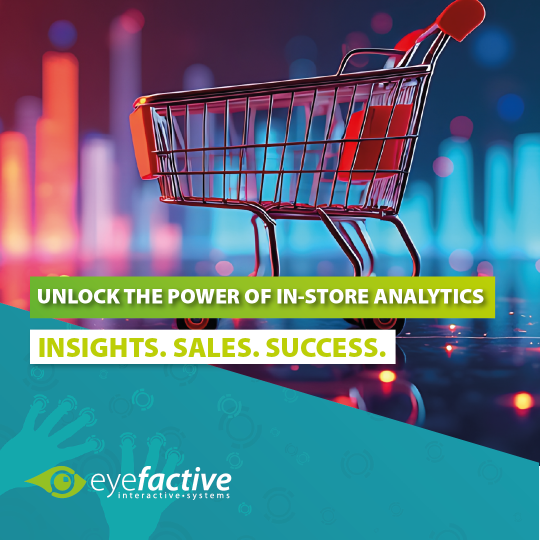
Revolutionizing Retail with In-Store Analytics!
In an age where every click counts, brick-and-mortar stores can now catch up with e-commerce platforms — thanks to smart in-store analytics! From foot traffic heatmaps to virtual shelves and real-time interaction tracking, retailers can now gather meaningful insights directly from the POS.
✨ Highlights from our latest whitepaper:
✅ Track customer behavior with beacons & camera analytics
✅ Understand buying intent through virtual shelves & surveys
✅ Personalize promotions and boost conversion rates
✅ Optimize store layout and product placement
✅ Increase ROI with data-driven decisions
📈 84% of sales still happen in-store – time to unlock that full potential!
Discover how smart analytics will shape the future of retail. Find the whitepaper here: https://www.eyefactive.com/en/whitepaper/in-store-retail-analytics-pos
#digitalsignage#touchscreensoftware#touchsoftware#multitouch#retail#Retail Analytics#keywork#Dataanalytics#interactiveretail#digitalmarketing#kiosksoftware#InnovativeDisplays#objectrecognition
0 notes
Text
Retail Analytics Revolution: How Quantzig Can Enhance Your Business
Introduction to Retail Analytics Retail analytics is reshaping the way businesses understand and engage with their customers. By applying advanced analytical techniques, retailers can uncover valuable insights that drive operational efficiency and enhance customer experiences. At Quantzig, we provide robust retail analytics solutions that empower businesses to leverage their data effectively.
The Role of Analytics in Retail The retail landscape is increasingly data-driven, with businesses relying on analytics to inform their strategies. Retail analytics allows organizations to gather and analyze data from various touchpoints, including online transactions, in-store purchases, and customer feedback. This wealth of information enables retailers to identify trends and make informed decisions that align with customer expectations.
Types of Retail Analytics Explained Retail analytics can be broken down into four primary categories:
Descriptive Analytics: This type focuses on analyzing past performance data to understand sales trends and customer behavior. By evaluating metrics such as sales volume and conversion rates, retailers can assess the effectiveness of their strategies.
Diagnostic Analytics: Unlike descriptive analytics, diagnostic analytics aims to explain why certain outcomes occurred. This involves comparing various data sets to identify correlations and causations.
Predictive Analytics: Predictive analytics uses historical data to forecast future trends. By applying statistical techniques and machine learning models, retailers can anticipate customer demands and adjust their inventory and marketing efforts accordingly.
Prescriptive Analytics: The most advanced form, prescriptive analytics, provides actionable recommendations based on predictive insights. Retailers can receive guidance on optimal pricing, inventory levels, and marketing strategies.
Integrating Retail Analytics into Business Strategies Implementing retail analytics requires a strategic approach to data management. Organizations should focus on integrating data from diverse sources, ensuring that they have a comprehensive view of customer interactions. Quantzig offers expertise in this area, helping retailers streamline their data processes and extract actionable insights that drive business performance.
Conclusion In the rapidly evolving retail industry, understanding customer behavior and optimizing operations is crucial. Retail analytics provides the insights needed to achieve these goals. With Quantzig’s support, businesses can harness the power of data analytics to improve customer experiences and drive growth.
For more information please contact
0 notes
Text
0 notes
Text
Unlocking Insights: How 4K HDR Cameras Enhance Retail Analytics with Auto Framing Features
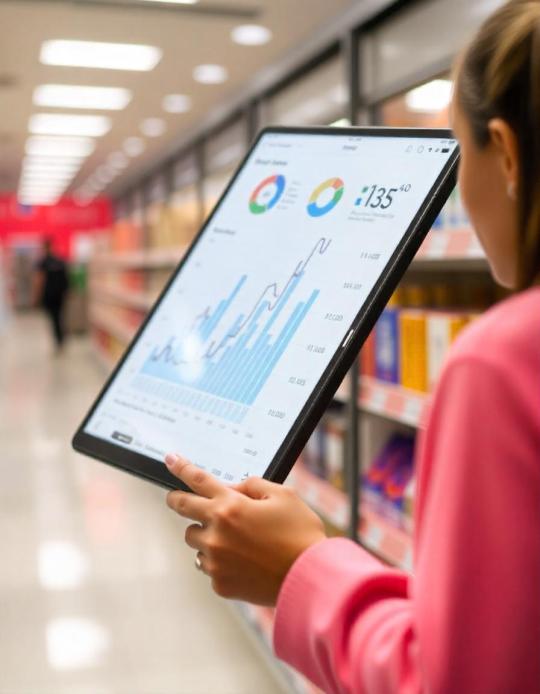
Knowing your customers is essential to success in the quickly changing retail environment. Data analysis and insight gathering are changing in retail due to the use of 4K HDR cameras and other cutting edge technologies. Retail analytics are made more successful by these cameras’ unique capabilities, such auto framing, which come in addition to their outstanding video quality.
The Importance of 4K HDR Cameras in Retail
Superior Image Quality
4K HDR cameras deliver stunning visuals that capture fine details and vibrant colors, which are essential for monitoring customer interactions and product displays. This high resolution allows retailers to analyze customer behaviors more effectively, enabling them to make informed decisions regarding inventory management and marketing strategies.
Enhancing Customer Experience
By utilizing 4K HDR cameras, retailers can gain deeper insights into customer preferences. The clarity of the footage allows for detailed analysis of customer interactions with products, leading to improved layout designs and promotional strategies. This focus on enhancing the customer experience can drive sales and increase customer satisfaction.
Auto Framing Features: A Game Changer
Dynamic Engagement
The auto framing feature in 4K HDR cameras ensures that the focus remains on customers as they move throughout the store. This dynamic engagement capability allows retailers to capture essential moments without manual adjustments, leading to more comprehensive data collection. Retailers can analyze these interactions to understand which areas of the store attract the most attention.
Real-Time Analytics
With auto framing, 4K HDR cameras provide real-time data analysis, enabling retailers to adjust their strategies instantly. For example, if certain products are not receiving attention, retailers can modify their placement or enhance marketing efforts accordingly. This adaptability is key in a fast-paced retail environment.
Integrating 4K HDR Cameras with Retail Analytics Platforms
Seamless Data Collection
Integrating 4K HDR cameras with retail analytics platforms streamlines the data collection process. Retailers can effortlessly gather video footage and extract valuable insights, such as foot traffic patterns and dwell times, which inform strategic decisions. The combination of high-resolution visuals and advanced analytics provides a comprehensive view of customer behavior.
Maximizing ROI
Investing in 4K HDR cameras with auto framing capabilities can lead to significant returns on investment. By understanding customer preferences and optimizing store layouts, retailers can enhance sales and reduce costs associated with ineffective marketing strategies. This technology empowers retailers to stay competitive in an ever-changing market.
Take Action Today
Ready to elevate your retail analytics? Explore the power of 4K HDR cameras with auto framing features. Discover how these advanced tools can unlock insights and drive your retail success. Check out the AR0821 4K HDR USB 3.0 Camera and see the difference for yourself. Embrace the future of retail analytics today!
0 notes
Text
0 notes
Text
How do stores stock just what you need? It's Predictive Analytics at play! By analyzing past purchases, they can forecast future sales, keeping shelves filled with your favorites while cutting down on excess inventory. It's like having a crystal ball for sales! 🛍️
#predictiveanalytics#sales#retail#retail analytics#retail industry#data driven#retail technology#trends#datascience#bigdata#getondata
2 notes
·
View notes
Text
The Science of Customer Behavior: Using Data to Understand Your Shoppers
In the age of data-driven decision-making, understanding what motivates your customers has become more of a science than guesswork. Retailers are moving beyond surface-level metrics to dig deep into shopper behavior using behavioral analytics and customer journey mapping. This approach doesn’t just reveal what customers do—it uncovers why they do it, allowing businesses to craft more engaging, personalized, and profitable experiences.

With the help of retail data analytics solutions, brands can now decode the entire customer journey across online and offline channels, turning every click, tap, and transaction into actionable insights.
What is Behavioral Analytics in Retail?
Behavioral analytics is the process of collecting and analyzing customer interactions across various touchpoints to understand patterns, preferences, and pain points. It focuses on real-time and historical data such as:
Browsing behavior on e-commerce platforms:
Mobile app usage.
Cart abandonment rates.
Product views and dwell time.
Engagement with promotions and loyalty programs.
In-store movements via sensors or heat maps.
When retailers apply data analytics in retail to behavioral data, they can identify which factors influence purchasing decisions, what drives drop-offs, and how to improve the overall user experience.
Mapping the Customer Journey with Data
A customer journey map is a visual representation of every step a shopper takes when interacting with your brand, from discovery to consideration, purchase, and post-sale engagement. While traditional journey maps relied on assumptions or limited data, today’s maps are built using hard evidence drawn from big data analytics in retail.
Here’s how data enriches each stage of the journey:
1. Awareness
At this stage, analytics track how customers first discover your brand. Are they coming from social media, search engines, influencer campaigns, or email newsletters? By understanding which channels perform best, marketers can optimize spend and messaging.
2. Consideration
When a customer browses products or compares options, behavioral data helps you identify interest and intent. For example, tracking the number of product views, wishlist activity, or time spent on specific categories can signal a high-potential buyer.
3. Purchase
Retailers can examine purchase data to understand what pushes customers to convert, or what prevents them from doing so. Insights like preferred payment methods, checkout drop-off points, or discount sensitivity help streamline the path to purchase.
4. Post-Purchase
Even after a sale, data analytics in retail continues to play a vital role. Tracking product reviews, return behavior, repeat purchases, and loyalty engagement helps brands refine retention strategies and personalize future offers.
Why Behavioral Analytics Matters
Leveraging behavioral insights offers several competitive advantages:
Personalization at Scale
Customers expect relevant experiences. With behavioral data, retailers can tailor product recommendations, content, and promotions to each shopper’s unique preferences, increasing engagement and conversions.
Improved UX and Conversion Rates
By identifying bottlenecks in the journey—such as confusing navigation, slow loading pages, or complicated checkouts—businesses can optimize user experience and reduce friction.
Higher Customer Retention
Understanding post-purchase behavior helps identify at-risk customers early. With the right triggers, brands can re-engage them through loyalty programs, surveys, or special offers.
Strategic Product and Inventory Decisions
Tracking what customers search for or frequently view can inform demand forecasting, allowing more accurate inventory planning and merchandising.
Real-World Example: Behavioral Analytics in Action
Imagine a fashion retailer noticing that mobile users frequently abandon carts after adding two or more items. By analyzing heatmaps and session recordings, they discovered that the checkout page is too cluttered on smaller screens. After streamlining the interface and enabling digital wallet payments, cart completion rates rose by 18%. This is the power of combining behavioral analytics with real-time data insights.
Choosing the Right Retail Data Analytics Solutions
To truly benefit from behavioral analytics and customer journey mapping, retailers need robust tools that can:
Collect data from all digital and in-store channels.
Visualize customer journeys dynamically.
Offer predictive insights using AI/ML.
Integrate with CRM, POS, and e-commerce platforms.
Ensure data privacy and compliance.
Fortunately, modern retail data analytics solutions offer all this and more, transforming raw behavior into strategies that enhance customer experience and drive revenue growth.
Final Thoughts
Understanding your customers is no longer about surveys and assumptions—it’s about science. By leveraging big data analytics in retail, businesses can decode the complex psychology behind every interaction, leading to smarter decisions and more loyal customers.
Incorporating behavioral analytics and real-time journey mapping into your strategy ensures you're not just reacting to customer needs, but anticipating them. In a landscape where customer expectations evolve daily, the brands that truly know their shoppers—through data—will always stay ahead.
0 notes
Text
A Post Graduate Certificate in Retail Operations is a professional certification program designed to provide you with a comprehensive understanding of the retail industry and the operations involved in running a successful retail business
0 notes
Text
What is Retail Analytics

In a world increasingly characterized by digital transactions, online interactions, and smart technologies, retailors have access to more data than ever before. But how can businesses harness this information to navigate the complex maze of retail landscape? The answer lies in the strategic application of retail analytics. This blog is your compass through the vast sea of data, illuminating the significance of retail analytics and its pivotal role in transforming raw data into actionable insights for businesses across diverse sectors.
What is retail analytics?
Retail analytics is the systematic use of data to interpret past performance, understand current trends, and make informed decisions to shape future strategies. It’s the lens through which businesses gain clarity amid the data chaos, ultimately enhancing their operational efficiency and profitability. It involves systematic examination of data related to sales, customer behavior, inventory levels, pricing, and marketing strategies, among other factors. Retail analytics didn’t appear overnight; it evolved alongside the digital revolution. Historically, retailers relied on intuition and experience. As the industry became more complex, the need for a data-driven approach became clear. Analytics became the guiding force, offering insights into consumer behavior, market trends, and operational efficiencies. This historical shift laid the foundation for the data-driven retail landscape we navigate today.
What is the role of analytics in retail?
Retail analytics offers a myriad of benefits across various dimensions, each playing a crucial role in optimizing business operations. Sales analytics provides invaluable insights into product performance, allowing businesses to identify top-selling items, understand customer preferences, and strategically position products for maximum impact. Customer analytics delves deep into understanding consumer behavior, aiding in the creation of personalized experiences, enhancing customer satisfaction, and fostering brand loyalty. Inventory analytics ensures efficient management of stock levels, preventing both stockouts and overstock situations, ultimately leading to improved supply chain dynamics. Pricing analytics enables businesses to set optimal prices by analyzing market trends, competitor pricing, and customer willingness to pay. Lastly, marketing analytics empowers companies to refine their promotional strategies, target the right audience, and measure the effectiveness of marketing campaigns, ultimately maximizing return on investment. Together, these facets of retail analytics form a comprehensive toolkit, driving informed decision-making and sustainable growth in the competitive retail landscape.
What are the key trends accelerating the retail digital transformation?
Supply chain complexity- Growing supply chain complexity, exacerbated by the pandemic, has put additional pressure on retailers to adopt digital solutions for better efficiency and responsiveness.
Phygital retail- The concept of “Phygital Retail,” which blends physical and digital experiences, is becoming increasingly important. This approach aims to create integrated, seamless shopping experiences that leverage the best of both worlds.
Customer insights and data analytics- Leveraging digital solutions and data analytics allows retailers to gain valuable customer insights, which are key to driving sales conversions and creating personalized shopping experiences.
Omni-channel commerce and mobile engagement- The adoption of omni-channel commerce strategies and the focus on mobile commerce are reflective of the shift towards a more digitally engaged, tech-savvy customer base. Statistics show that a significant portion of customers shop from mobile apps, highlighting the importance of mobile engagement.
Contactless payments and self-checkout- Contactless payments are increasingly preferred, as customers want a safe and convenient way to pay for their purchases. Retailers are investing in contactless payment solutions to meet this demand. Self-checkout is a technology that allows customers to scan and pay for their items without the need for a cashier. Self-checkout is becoming more popular, as it allows retailers to reduce costs and improve customer efficiency.
Social commerce- Social commerce refers to the integration of social media and e-commerce. Retailers use social media platforms like Instagram, TikTok, and Facebook to connect with customers, promote products, and drive sales.
How to get started with retail analytics?
Embarking on the journey of retail analytics is not just about adopting a tool; it’s a holistic approach that transforms the way you understand and operate your business. As you navigate this landscape, remember: the true power of retail analytics lies not just in the data but in the actionable insights it unlocks for a brighter and more informed future.
Define objectives The first step is to clearly define your business objectives. What do you aim to achieve with retail analytics? Whether it’s optimizing sales, enhancing customer satisfaction, or streamlining inventory management, setting clear goals creates the foundation for your analytics initiatives.
Data collection and integration Data is the lifeline of retail analytics, and collecting the right data from various sources is crucial. From point-of-sale systems and online interactions to customer surveys and social media, cast a wide net. But remember, it’s not just about quantity—it’s about relevance. Integrate this diverse data into a unified view, creating a comprehensive and holistic understanding of your business operations.
Selecting the right analytics tools With goals defined and data in hand, the next step is choosing the right analytics tools. The market offers many options. But having various tools does not mean that your problem is solved. This is where Infoveave steps in – a powerful solution designed to visualize data and analyze performance seamlessly. With built-in charts and graphs, custom info boards, and tailored reporting options, Infoveave enhances collaboration with interactive annotations and increases team efficiency using robotic process automations.
Training and skill development Arming your team with the skills to navigate analytics tools is as crucial as selecting the tools themselves. Invest in training programs to ensure that your staff understands how to effectively use the chosen analytics tools. Fostering a data-driven culture within your organization is not just about tools; it’s about empowering your team to derive meaningful insights from data.
Monitor key performance indicators (KPIs) Establish key performance indicators (KPIs) aligned with your business objectives. Regularly monitor these metrics to gauge the success of your retail analytics initiatives. Whether it’s tracking sales growth, customer satisfaction scores, or inventory turnover rates, KPIs provide tangible benchmarks for measuring progress.
Scale and Expand As your team becomes adept at harnessing the power of retail analytics and as your business objectives evolve, consider scaling and expanding your analytics initiatives. Explore advanced analytics techniques, delve into new data sources, and continuously align your analytics strategies with the changing dynamics of the retail landscape.
In the ever-evolving landscape of digital transactions and smart technologies, the role of retail analytics emerges as a beacon guiding businesses through the vast sea of data. From its historical roots in intuition to the sophisticated data-driven methodologies of today, retail analytics has become an indispensable tool for understanding consumer behavior, market trends, and operational efficiencies. This transformative force not only interprets the past and illuminates the present but, more importantly, propels businesses towards an informed and brighter future. In the journey of retail analytics, success lies not just in the adoption of tools but in the strategic application of insights derived from data. As businesses define their objectives, harvest relevant insights, choose their analytics arsenal, and empower their teams, they embark on a holistic approach that reshapes the way they understand and operate. The true power of retail analytics is not confined to the data it processes but in the actionable insights it unlocks, paving the way for a more resilient, adaptive, and successful future in the dynamic retail landscape.
Original Source: What is retail analytics
0 notes
Text
Business Centre
F O C U S S E D 1) Open social media in chrome. 2) Copy and Paste link in chrome 3) Buy
EXTRA PE links are valid till 00:00 AM Shanky: Upto 80% Across Categories https://fkrt.co/OUlVDK Shanky: 60-80% Off on Top Brands on Myntra https://myntr.in/lm4Tom Shanky: I have found some Amazing Deals on XYXX Crew
Shop Now https://extp.in/quDCZ4 Shanky: I have found some Amazing Deals on World Of Asaya
Shop Now https://extp.in/z569Zm
#business analytics#ai-driven analytics#advanced analytics#google analytics#analytics#marketing analytics#predictive analytics#hr analytics#data analytics#retail analytics
0 notes